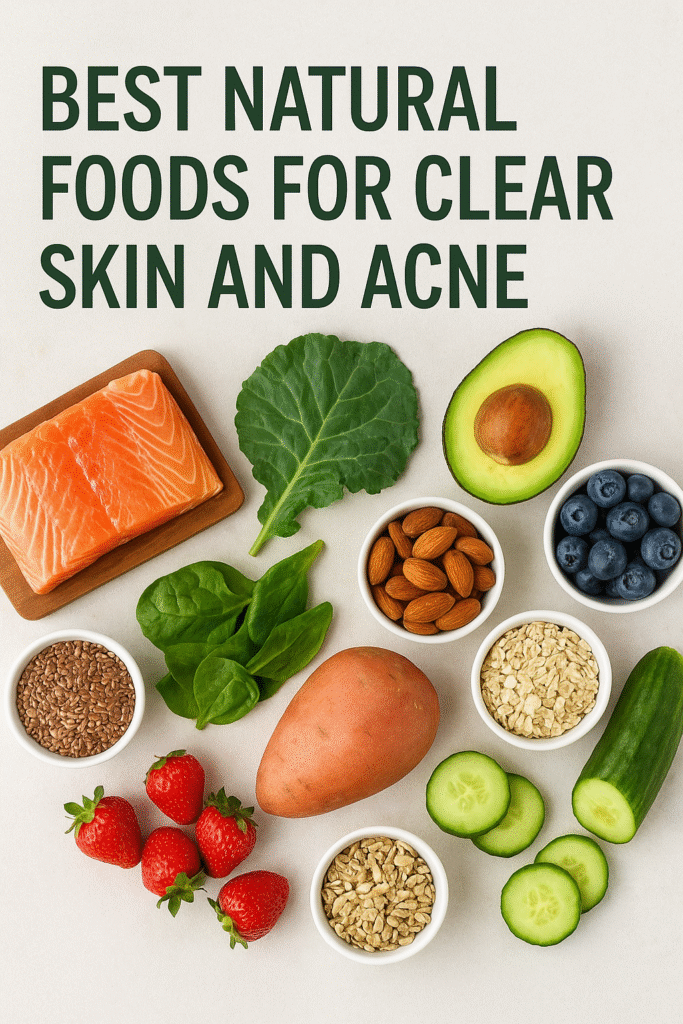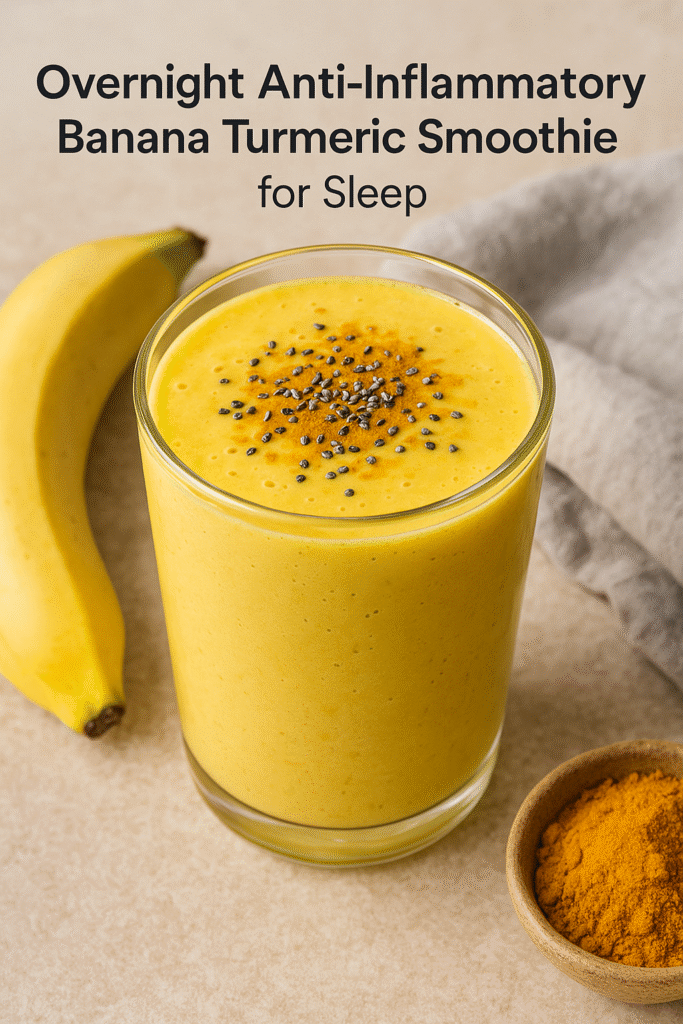
⚠️ Affiliate Disclaimer: This post may contain affiliate links, which means I may earn a small commission — at no extra cost to you — if you make a purchase through one of these links. I only recommend products or services I genuinely trust and believe can provide value. Thank you for supporting My Medical Muse!
15 Best Natural Foods for Clear Skin and Acne (Backed by Science)
Best Natural Foods for Clear Skin and Acne: A Complete Guide
Your skin is often a reflection of your inner health, while skincare routines, cleansers, and serums play a role in maintaining clear skin, true radiance begins from within. What you eat directly impacts your skin’s appearance, texture, and resilience against issues like acne, dryness, and premature aging.
Acne, in particular, is one of the most common skin concerns worldwide, It affects not only teenagers but also adults. While genetics, hormones, and lifestyle factors play a part, diet is increasingly recognized as a powerful tool for supporting clearer skin. Research has shown that certain foods can reduce inflammation, balance hormones, promote healing, and provide essential nutrients for glowing, acne-free skin.
In this comprehensive guide, we’ll explore the best natural foods for clear skin and acne backed by science, holistic wisdom, and practical tips to help you nourish your skin from the inside out.
Why Diet Matters for Clear Skin
When it comes to achieving clear, radiant skin, many people focus solely on external skincare like cleansers, serums, and creams. While these products help, what you put inside your body is just as important, if not more. The foods you eat can either trigger breakouts or help heal and protect your skin.
Here’s how diet directly impacts skin health:
1. Hormonal Regulation
Blood sugar spikes from refined carbs and sugary foods can raise insulin levels, which in turn stimulate the production of androgens (male hormones present in both men and women). These hormones increase oil production, clog pores, and lead to acne flare-ups. On the other hand, eating whole, nutrient-rich foods helps keep blood sugar stable and hormones balanced.
2. Inflammation Control
Acne is fundamentally an inflammatory condition. Diets high in processed foods, refined oils, and trans fats can worsen inflammation, making breakouts more severe. Anti-inflammatory foods such as fatty fish, leafy greens, and berries calm redness, swelling, and irritation.
3. Gut Health Connection
The gut-skin axis is a two-way relationship between digestive health and skin health. A compromised gut (due to poor diet, stress, or antibiotics) can lead to systemic inflammation and skin issues. Probiotic-rich foods like yogurt, sauerkraut, and kefir restore healthy gut bacteria, which often results in clearer skin.
4. Nutrient Supply
Your skin is the body’s largest organ, and like every organ, it needs nutrients to thrive. Vitamins A, C, and E, zinc, and antioxidants are critical for healing, collagen production, and protection against oxidative stress, without them, the skin barrier weakens, making it more vulnerable to acne and irritation.
5. Hydration and Detoxification
Water alone is not enough to hydrate skin, your diet plays a big role. Water-rich fruits and vegetables, along with foods that support liver function, help flush out toxins and keep your skin hydrated, supple, and glowing.
Best Natural Foods for Clear Skin and Acne
Now that we understand why diet matters, let’s look at the best natural foods that support clear, healthy skin.
1. Fatty Fish (Salmon, Mackerel, Sardines)
Fatty fish are among the most powerful foods for skin health, thanks to their rich omega-3 fatty acid content.
Omega-3s reduce inflammation that contributes to acne. They also help regulate oil production, keeping pores clear and preventing the formation of pimples. Regular intake of fatty fish has even been linked to reduced acne severity in some studies.
Key Nutrients:
Omega-3 fatty acids, protein, vitamin E (a potent antioxidant that protects skin from free radicals), zinc, and selenium.
Include grilled, baked, or steamed salmon in your diet at least twice a week. Mackerel and sardines are also excellent options—nutrient-dense, budget-friendly, and packed with skin-healing benefits.
If you don’t eat fish, consider plant-based omega-3 sources like flaxseeds, chia seeds, or walnuts, or a high-quality algae oil supplement.
2. Leafy Greens (Spinach, Kale, Swiss Chard)
Leafy greens are some of the most detoxifying and nutrient-rich foods you can add to your diet. Leafy greens are loaded with chlorophyll, a compound that helps cleanse the blood and flush toxins from the body. This detoxifying effect reduces the burden on the skin. They are also rich in antioxidants that neutralize free radicals, and vitamin A, which supports cell turnover, preventing dead skin buildup that can clog pores.
Key Nutrients: Vitamins A, C, and K; folate; magnesium; and fiber.
How to Eat:
- Add spinach to morning smoothies.
- Toss kale into hearty salads or soups.
- Lightly sauté Swiss chard with garlic and olive oil for a skin-nourishing side dish.
- Add spinach to morning smoothies.
Pair leafy greens with a healthy fat like olive oil or avocado to boost the absorption of fat-soluble vitamins.
3. Nuts and Seeds (Walnuts, Chia, Flaxseeds, Sunflower Seeds)
Nuts and seeds are small but mighty when it comes to skin health.
Why It Helps:
- Zinc: Found abundantly in pumpkin seeds and walnuts, zinc regulates oil gland activity and has antibacterial properties that fight acne-causing bacteria.
- Omega-3s: Flaxseeds and chia seeds provide plant-based omega-3 fatty acids that reduce inflammation.
- Vitamin E: Sunflower seeds, in particular, are loaded with vitamin E, which protects skin cells from oxidative damage.
- Zinc: Found abundantly in pumpkin seeds and walnuts, zinc regulates oil gland activity and has antibacterial properties that fight acne-causing bacteria.
Together, these nutrients keep skin calm, balanced, and resilient against acne flare-ups.
Key Nutrients: Healthy fats, protein, zinc, selenium, and vitamin E.
How to Eat:
- Sprinkle chia or flaxseeds over oatmeal, yogurt, or salads.
- Snack on a small handful of walnuts or almonds.
- Add sunflower seeds to smoothie bowls or trail mix.
- Sprinkle chia or flaxseeds over oatmeal, yogurt, or salads.
Choose raw or lightly roasted nuts and seeds without added salt or sugar for maximum skin benefits.
4. Avocados
Avocados have earned their reputation as a superfood for glowing skin. Their creamy texture comes from heart-healthy fats that nourish your skin from the inside out.
Why It Helps:
The monounsaturated fats in avocados keep skin supple, flexible, and deeply moisturized. They also contain powerful antioxidants that fight oxidative stress, the cellular damage that accelerates aging and worsens acne scars. Together, these benefits make avocados one of the best foods for long-lasting skin radiance.
Key Nutrients: Monounsaturated fats, vitamin E (a potent antioxidant), vitamin C (for collagen formation), lutein, and zeaxanthin (both protect skin from UV damage).
How to Eat:
- Mash avocado on whole-grain toast for a nutrient-packed breakfast.
- Blend it into smoothies for a creamy texture.
- Whip up a classic guacamole with lime and tomatoes.
- Mash avocado on whole-grain toast for a nutrient-packed breakfast.
A drizzle of lemon juice prevents avocado browning and adds an extra dose of vitamin C.
5. Berries (Blueberries, Strawberries, Raspberries)
Berries are tiny but mighty allies for your skin, packed with antioxidants and vitamins that fight acne and slow down visible aging.
Why It Helps:
Their high concentration of antioxidants combats free radicals, which damage skin cells and trigger inflammation. Vitamin C in berries supports collagen production, keeping skin smooth, firm, and youthful. The anti-inflammatory compounds also calm acne-related redness and swelling.
Key Nutrients: Vitamin C, fiber, flavonoids, and anthocyanins.
How to Eat:
- Mix fresh berries into yogurt or overnight oats.
- Toss them into smoothies for a refreshing boost.
- Enjoy as a sweet, guilt-free snack.
- Mix fresh berries into yogurt or overnight oats.
Choose fresh or frozen berries (without added sugar) to preserve their skin-healing properties.
6. Sweet Potatoes
Sweet potatoes are naturally sweet, fiber-rich, and one of the best sources of beta-carotene, which your body converts into vitamin A.
Why It Helps:
Vitamin A regulates skin cell turnover, reducing the likelihood of clogged pores and acne breakouts. Beta-carotene also acts as a natural sunblock by protecting the skin from UV damage at a cellular level. This dual action makes sweet potatoes essential for acne prevention and anti-aging.
Key Nutrients: Beta-carotene, vitamin C, fiber, and potassium.
How to Eat:
- Bake sweet potatoes and serve with olive oil for better absorption.
- Roast them with spices as a wholesome side dish.
- Mash them as a healthier alternative to regular mashed potatoes.
- Bake sweet potatoes and serve with olive oil for better absorption.
Pair with healthy fats like avocado or olive oil to maximize vitamin A absorption.
7. Green Tea
Though technically a beverage, green tea is one of the most researched natural remedies for acne and skin health.
Why It Helps:
Green tea contains catechins, particularly EGCG (epigallocatechin gallate), which reduce sebum (oil) production and inhibit acne-causing bacteria. These antioxidants also improve skin hydration, elasticity, and reduce inflammation all factors that lead to smoother, clearer skin.
Key Nutrients: EGCG, polyphenols, and catechins.
How to Eat/Drink:
- Drink 2-3 cups daily for maximum benefits.
- Use cooled green tea as a refreshing face rinse or toner to calm irritated skin.
- Add matcha (a powdered form of green tea) to smoothies or lattes.
- Drink 2-3 cups daily for maximum benefits.
Avoid adding excess sugar or milk, as they may reduce green tea’s skin-healing benefits.
8. Probiotic-Rich Foods (Yogurt, Kefir, Sauerkraut, Kimchi)
Your skin often reflects the health of your gut, and probiotic-rich foods are the best way to strengthen that connection.
Why It Helps:
Probiotics restore the balance of healthy bacteria in your gut, which lowers systemic inflammation, a key driver of acne. They also help strengthen the skin barrier, reducing sensitivity, redness, and breakouts.
Key Nutrients: Probiotics, calcium, protein, and B vitamins.
How to Eat:
- Add plain, unsweetened yogurt to breakfast bowls or smoothies.
- Drink kefir as a refreshing snack.
- Include sauerkraut or kimchi as flavorful sides with meals.
- Add plain, unsweetened yogurt to breakfast bowls or smoothies.
Always choose probiotic foods without added sugars or artificial flavors for maximum gut and skin benefits.
9. Tomatoes
Tomatoes are more than just a salad staple, they are a skin superfood rich in lycopene, a carotenoid with strong antioxidant powers.
Why It Helps:
Lycopene protects the skin from UV damage, reduces inflammation, and promotes smoother, healthier skin. Vitamin C in tomatoes further supports collagen production, making your skin firm and youthful.
Key Nutrients: Lycopene, vitamin C, potassium, and folate.
How to Eat:
- Add fresh tomatoes to salads and sandwiches.
- Blend into soups or sauces (cooking increases lycopene availability).
- Pair with olive oil to enhance nutrient absorption.
- Add fresh tomatoes to salads and sandwiches.
Sun-dried tomatoes and tomato paste are concentrated sources of lycopene.
10. Whole Grains (Oats, Quinoa, Brown Rice)
Not all carbs are bad for your skin, whole grains provide steady energy and support hormone balance.
Why It Helps:
Refined carbs spike blood sugar, triggering insulin surges that worsen acne. Whole grains, rich in fiber, help stabilize blood sugar, keeping hormone levels balanced. They also contain vitamins B, that regulate skin metabolism and zinc for acne prevention.
Key Nutrients: Fiber, zinc, iron, and B vitamins.
How to Eat:
- Swap white rice for brown rice or quinoa in meals.
- Choose steel-cut oats topped with berries for breakfast.
- Use whole-grain bread or pasta instead of refined versions.
- Swap white rice for brown rice or quinoa in meals.
Look for minimally processed whole grains with no added sugars for the best results.
11. Cucumbers
Cucumbers are one of the most hydrating foods you can eat, and hydration is key for clear, supple skin.
Why It Helps:
With over 90% water content, cucumbers help keep your skin plump and moisturized from within. They also contain silica, a mineral that strengthens connective tissues, supporting skin elasticity and smoothness. Their natural antioxidants fight off skin damage and calm irritation.
Key Nutrients: Water, vitamin K, antioxidants, and silica.
How to Eat:
- Slice cucumbers into salads for a refreshing crunch.
- Infuse cucumber slices in water for a skin-friendly detox drink.
- Snack on them raw with hummus or yogurt dip.
- Slice cucumbers into salads for a refreshing crunch.
Cucumber slices aren’t just great to eat, placing chilled slices on your eyes can reduce puffiness and refresh tired skin.
12. Carrots
Carrots are another beta-carotene powerhouse, giving your skin a radiant glow.
Why It Helps:
Beta-carotene converts into vitamin A in the body, which regulates oil production and helps prevent clogged pores. Carrots also contain antioxidants that combat free radicals and delay signs of aging.
Key Nutrients: Beta-carotene, fiber, vitamin K, and potassium.
How to Eat:
- Snack on raw carrot sticks with a dip.
- Add diced carrots to soups and stews.
- Juice carrots with ginger and lemon for a refreshing, skin boosting drink.
- Snack on raw carrot sticks with a dip.
Lightly cooking carrots enhances beta-carotene absorption, especially when paired with a healthy fat like olive oil.
13. Dark Chocolate (70% and Above)
Yes, you can enjoy chocolate and still support healthy skin, as long as it’s the right kind.
Why It Helps:
Dark chocolate (at least 70% cocoa) is rich in flavonoids, which improve blood circulation to the skin, increase hydration, and protect against UV damage. These compounds also fight oxidative stress, helping your skin maintain a youthful glow.
Key Nutrients: Antioxidants, iron, magnesium, and zinc.
How to Eat:
- Choose 70% cocoa or higher for maximum benefits.
- Enjoy a small square daily as a guilt-free treat.
- Add unsweetened cocoa powder to smoothies for an antioxidant boost.
- Choose 70% cocoa or higher for maximum benefits.
Avoid milk chocolate, it’s high in sugar and dairy, both of which may worsen acne.
14. Garlic
Garlic is more than just a flavor enhancer, it’s a skin-healing powerhouse.
Why It Helps:
Garlic contains allicin, a natural compound with antibacterial, antifungal, and anti-inflammatory properties. It helps your body fight acne-causing bacteria, reduces skin infections, and boosts immune function for overall healthier skin.
Key Nutrients: Allicin, manganese, vitamin B6, and selenium.
How to Eat:
- Use raw garlic in salad dressings and dips.
- Add minced garlic to stir-fries, soups, and sauces.
- Roast whole garlic bulbs for a milder, sweeter flavor.
- Use raw garlic in salad dressings and dips.
Crushing garlic and letting it sit for 10 minutes before cooking maximizes allicin formation.
15. Watermelon
Watermelon is the ultimate skin-hydrating fruit, especially in hot weather.
Why It Helps:
With its high water content, watermelon keeps your skin hydrated and helps flush out toxins. It’s also rich in lycopene, an antioxidant that reduces acne inflammation and protects the skin from UV-induced damage. Vitamin C supports collagen production and healing of acne scars.
Key Nutrients: Water, vitamin C, lycopene, and amino acids.
How to Eat:
- Enjoy chilled watermelon slices as a refreshing snack.
- Blend into smoothies or juices.
- Toss cubed watermelon into a salad with mint and feta.
- Enjoy chilled watermelon slices as a refreshing snack.
Pair watermelon with healthy fats (like avocado) to increase lycopene absorption.
Additional Tips for Using Food to Fight Acne
Diet is a powerful tool for achieving clear skin, but it works best when paired with consistency and balance. Keep these tips in mind:
Avoid Trigger Foods
- Dairy, processed sugar, and refined carbs are common acne triggers for many people. Monitor your skin’s reaction to these foods and cut back if needed.
- Dairy, processed sugar, and refined carbs are common acne triggers for many people. Monitor your skin’s reaction to these foods and cut back if needed.
Stay Consistent
- Skin improvements from dietary changes usually take 6-8 weeks to show. Patience is key, stick with your skin-friendly foods.
- Skin improvements from dietary changes usually take 6-8 weeks to show. Patience is key, stick with your skin-friendly foods.
Balance is Key
- A healthy diet is only part of the equation. Combine it with good sleep, regular exercise, and stress management for the best results.
- A healthy diet is only part of the equation. Combine it with good sleep, regular exercise, and stress management for the best results.
Hydrate Well
- Drink at least 8 glasses of water daily, alongside water-rich foods like cucumbers, watermelon, and leafy greens. Proper hydration supports detoxification and maintains skin elasticity.
- Drink at least 8 glasses of water daily, alongside water-rich foods like cucumbers, watermelon, and leafy greens. Proper hydration supports detoxification and maintains skin elasticity.
Listen to Your Body
- Everyone’s skin is unique. Keep a food diary to track what improves or worsens your skin, and adjust your diet accordingly.
Final Thoughts
Clear, glowing skin doesn’t just come from creams or treatments, it starts with the foods you put on your plate. Incorporating nutrient-dense, anti-inflammatory, and hydrating foods like fatty fish, leafy greens, berries, and probiotics can make a remarkable difference in your skin health.
While no single food is a miracle cure for acne, consistently nourishing your body with whole, natural foods creates an environment where your skin can thrive. Pair this with proper skincare, stress management, and hydration, and you’ll have a holistic approach to fighting acne and maintaining radiant skin.
👩⚕️ Need Personalized Health Advice?
Get expert guidance tailored to your unique health concerns through MuseCare Consult. Our licensed doctors are here to help you understand your symptoms, medications, and lab results—confidentially and affordably.
👉 Book a MuseCare Consult NowRelated Blog Post You Might Like:
- 13 Powerful Ways Zinc Deficiency Wrecks Your Skin and Immunity (Backed by Science)
- 7 Shocking Causes of Vitamin Deficiency Tingling and Crawling Skin
- 15 Natural Remedies for Sore Throat That Work Fast and Effectively
- 15 Daily Habits That Quietly Kill Your Mental Health (And How to Stop Them)
- 15 Powerful Home Remedies for Constipation That Really Work
- Why Men Hide Symptoms of Depression: 7 Hidden Truths You Need to Know


